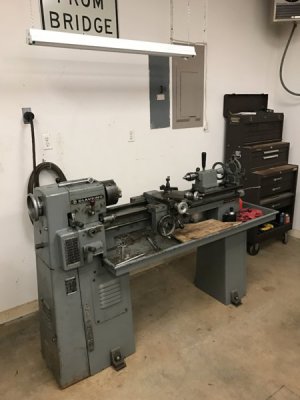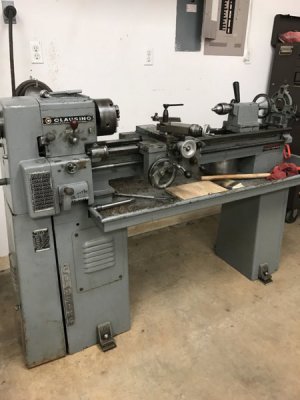- Joined
- Mar 21, 2013
- Messages
- 4,063
I see no need to bolt down hobby lathes to the floor, and multiple reasons why not.
True that! (I used to live in earthquake country...err...CA)
I see no need to bolt down hobby lathes to the floor, and multiple reasons why not.
I've been told that the 12-14" lathes are very sensitive in this regard. Anytime I buy a new lathe or even just move one like I just did, I get it up on the stand and let it set for several days to a week or more to allow the cast iron to relax prior to leveling. Mine just sat on wood pallets for almost 9 months until I got it set up on it's stand last week. Did the final leveling and test cuts yesterday and everything worked out fine.
My suggestion would be to follow Grizz's suggestions and see what happens. Not sure I'd wait a month though unless the lathe went through some severe temperature/humidity changes in getting to you.
Cabinet mounted lathes usually do not need bolting to floor.
So first action is remove all floor bolts then place washers under or adjust feet just to have cabinet not rock.
Now level front to back at headstock then same at tail stock.
Length wise does not matter yet.
It will not Un - twist yet but add height to low side until high side is not touching the floor and leave it alone.
It will settle down so place a sheet of paper under it and make sure it can move.
Use your foot to slide it and when it stops the lathe has touched down.
Re level and repeat.
Sent from my SAMSUNG-SGH-I337Z using Tapatalk
My lathe sets on sheet metal cabinets . All the weight is up high . It is very top heavy .I see no need to bolt down hobby lathes to the floor, and multiple reasons why not.


Your Clausing is in no risk of falling over unless you run into it with a car or fork lift or similar.My lathe sets on sheet metal cabinets . All the weight is up high . It is very top heavy .
It moves sometime just taking the 8" four jaw chuck off the spindle it will rock side to side a little .
I will set the anchor bolts till they just kiss off on top of the four legs . I hope this will help stop
The side to side movement .
This is a very light weight lathe 800 or 900
Lbs at the most . I am looking for something
Bigger in the 3000 lb range .
.............................. Each lathe is a separate case.
